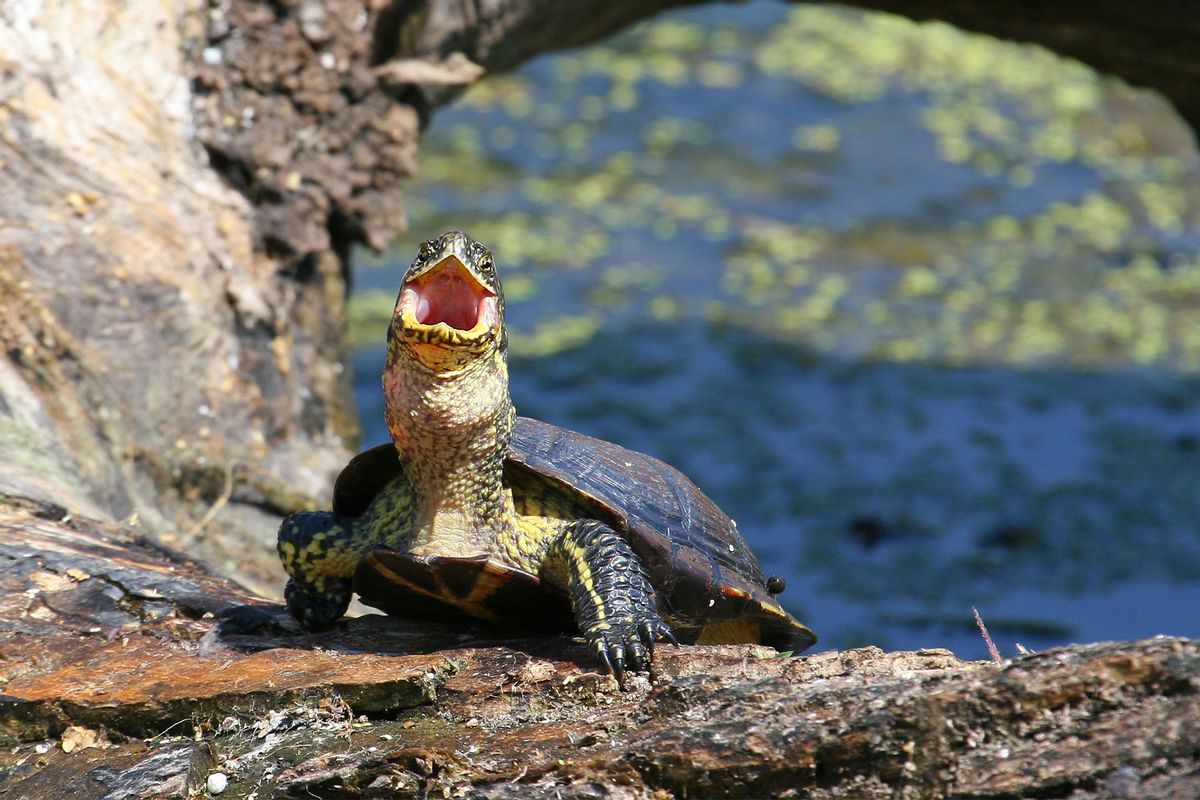There is a new study out about how turtles and other amphibious species previously thought to be mute actually vocalize with each other. Yet the study did not focus entirely on the shelled animals known for such oddities as breathing through their butts or being exploited for car advertisements and Dana Carvey comedies.
Along with the mata mata turtle and a reptile known as the tuatara, among the other animals studied were caecilians, a slithery type of amphibian with an outward appearance akin to snakes. Instead of having a body covered in scales, however, a caecilian's body is covered in skin with ring-shaped folds. Located primarily in the tropics of Africa, Asia and Latin America, one would not expect caecilians to be particularly vocal. Yet as University of Zurich researcher Gabriel Jorgewich-Cohen studied caecilians to see if they could produce vocalizations, he found they were not only vocal — they were comical.
"While recording animals, caecilians were the species I expected to be the one that would not vocalize at all," Cohen admitted to Salon by email. "It was a great surprise to discover that they not only vocalize but also do so very often, producing very funny sounds. When I first heard it, I sent it to a friend who was helping me during fieldwork and he could not believe me. He thought it was me making the sounds and making fun of him."
"It was a great surprise to discover that they not only vocalize but also do so very often, producing very funny sounds."
Jorgewich-Cohen's friend had no reason to feel self-conscious, as the paleontologist had joined a team of international researchers to produce a landmark new study for the journal Nature Communications. Seeking to learn about the evolutionary origins of acoustic communication in vertebrates, the scientists recorded 53 species from four major clades — turtles, tuatara, caecilians and lungfish — to analyze what they heard. In the process, they learned that there are turtles, tuataras, and caecilians that engage in vocal communication, even though those clades had previously been perceived as non-vocal.
"When put in perspective, these findings show that vocal behavior is an evolutionary innovation that first appeared in the common ancestor of tetrapods (amphibians, reptiles, birds and mammals) and lungfish," Jorgewich-Cohen explained.
Want more health and science stories in your inbox? Subscribe to Salon's weekly newsletter The Vulgar Scientist.
To be clear, this vocal behavior does not resemble anything as magnificent as a wolf howling or a bird tweeting. The Cayenne caecilian, in this journalist's opinion, produced sounds a bit like exaggerated yet strangely half-hearted armpit farts, while the mata mata turtle almost came across like a purring cat. Yet despite these seemingly alien vocalizations, the new study reveals that these creatures have much more in common with human beings than we had previously assumed. Rather than making these animals more exotic when compared to us, the new study discloses the extent to which we are part of the same family tree.
"Acoustic communication, broadly distributed along the vertebrate phylogeny, plays a fundamental role in parental care, mate attraction and various other behaviours," the authors explain in their study. "Despite its importance, comparatively less is known about the evolutionary roots of acoustic communication."
"Acoustic communication, broadly distributed along the vertebrate phylogeny, plays a fundamental role in parental care, mate attraction and various other behaviours."
Regardless of the revelations from this paper, there is plenty of more work necessary.
"New research is needed to better understand the usage of these sounds by these animals, together with their social behavior and cognitive functions," Jorgewich-Cohen pointed out. "Studies focused on vocal behavior during the transition from water (fish) to land (tetrapods) can also help to clarify if this behavior appeared 400 [million years before the present], like we suggest, or if this is actually a much older behavior that we may share with some lineages of bony fish."
In addition to helping researchers better understand humanity's relationship with the animal kingdom, the study also opens up pathways for deepening our comprehension of the origins of human speech.
"The common ancestral origin of acoustic communication provides further justification for the use of choanate animals as models in the study of the origins of human language and speech," the authors write.



Shares